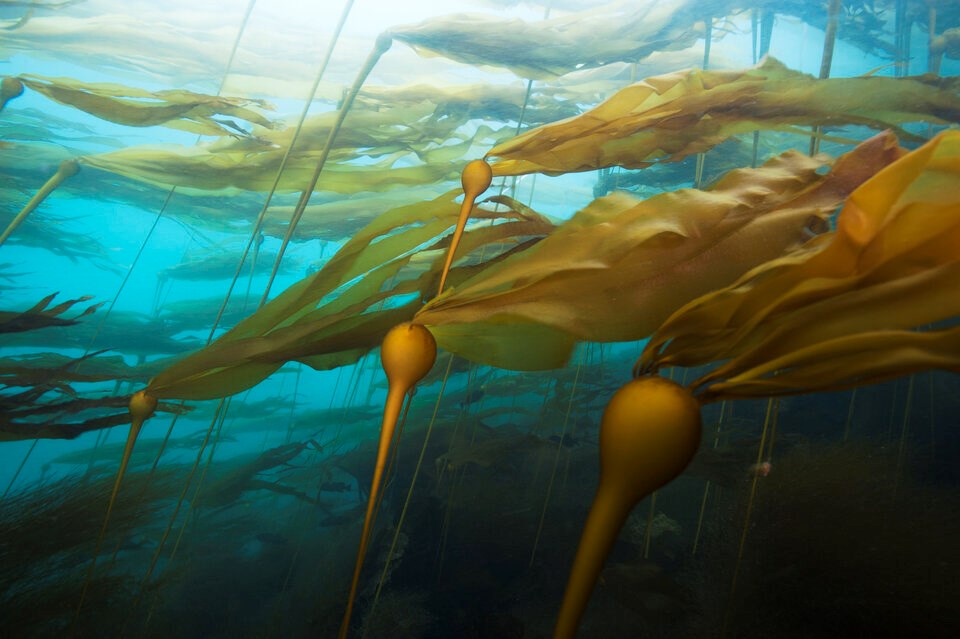Kelp forests off the coast of British Columbia and Washington State are more than 32 million years old — twice the age previously thought, a new study has found.
The research, published Tuesday in the journal Proceedings of the National Academy of Sciences, examined fossilized kelp holdfasts, the root-like structures the algae use to cling to the ocean floor.
Because kelp forests form the base of a complex marine ecosystem, locating kelp fossils double the age of what had previously been found means the complex myriad of life that relied on the macro-algae are also much older than anyone thought, said study co-author Cindy Looy.
“The age of this old kelp was a big surprise,” Looy, an associate professor in the University of California, Berkeley's Department of Integrative Biology, said in an email.
In addition to being older, the scientists found the long stipes that connect kelp’s holdfasts to their gas-filled bladders on the surface were likely more flexible in their early form.
That may have allowed the ancient kelp to act as an important source of food for extinct manatee-like creatures that plied the shallow waters of the northern Pacific Rim, from southern Japan to Baja California.
“For a long time, people have wondered about the diet of now-extinct, strange-looking large swimming vegetarian relatives of elephants and seacows called desmostylians,” Looy said. “They lived close to our shores between 28 and 7 million years ago, so now we know that they may well have lived on munching kelps.”
The study would not have been possible without James Goedert, an amateur fossil collector and research associate at the University of Washington’s Burke Museum of Natural History and Culture, who found the fossils at a beach on the Olympic Peninsula.
Goedert shared what he found with Steffen Kiel, lead author on the paper and a senior curator at the Swedish Museum of Natural History in Stockholm. Kiel dated the fossils and sent them off to Looy to take X-ray slices.
Inside the holdfast, the X-rays turned up a barnacle, a snail, a mussel and a tiny, single-celled organism.
Those X-rays showed that while kelp-based ecosystems are much older than once thought, the organisms associated with the oldest kelp forests were different from today and tended to be “rather species-poor compared to the vast diversity we see nowadays,” Looy said.
It wasn't until 14 million years ago that kelp forests had grown into a flourishing habitat, supporting everything from bivalves — including clams, mussels and oysters — to larger creatures, like the kolponomos, an extinct marine bear and predecessor of the sea otter.
Today, kelp forests off B.C.’s coast are important, rich ecosystems, that feed and shelter for an incredible network of species. The kelp fossils show that to achieve that diversity of life required significant trial and error, an evolutionary process involving the arrival and disappearance of a number of species.
The fossils are a first step in understanding how kelp forests first emerged. But the fossils are also thought to have lived at their upper water temperature range, meaning cooler B.C. shorelines could be home to even more ancient fossils.
Kiel said that should inspire anyone walking along the beach to pay attention, and perhaps help fill in the evolutionary puzzle.
“The fossils were found by an amateur collector,” he said. “Explore your surroundings; perhaps you find something exciting, too.”




